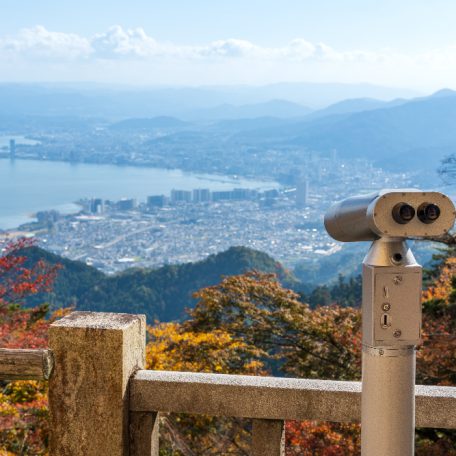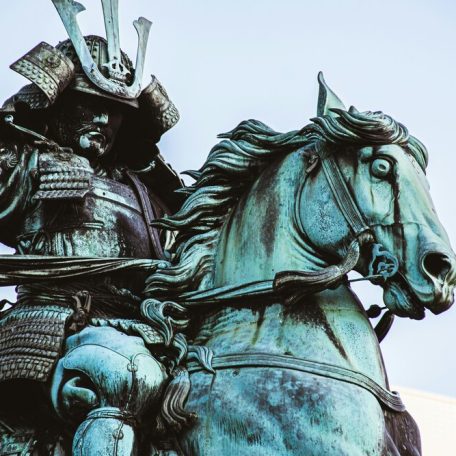The Difference Between Japanese Shrines And Temples
Oct 8, 2023
BY Kiko Yee

When one thinks of Japan, images of vibrant cities, technological advancements, and rich cultural heritage often come to mind. At the heart of this beautiful country lies a world of ancient traditions and spiritual practices. Japanese temples and shrines, deeply rooted in history and spirituality, stand as iconic symbols of Japan’s cultural identity.
Japanese Temples
Japanese temples, known as “tera (寺)” in Japanese, are Buddhist religious structures dedicated to the worship of Buddha. These magnificent edifices serve as places of prayer, meditation, and learning, as well as centres for Buddhist ceremonies and rituals. Japanese temples come in various sizes, from small local temples to grand complexes spread across vast areas.
One of the most distinguishing features of Japanese temples is their architectural style. Traditional temples often showcase exquisite craftsmanship, intricate woodwork, and beautifully landscaped gardens. They are designed to harmonise with their natural surroundings, creating a serene and contemplative atmosphere. Some well-known architectural styles include the elegant wooden structures of the Heian period, the Zen-inspired simplicity of Zen temples, and the majestic golden halls seen in some Kyoto temples.
Here is a list of Japan’s most famous temples:

kinkaku-ji – Photo credit: Shokuku Ji
Kinkaku-ji (Golden Pavilion) – Kyoto:
Perhaps one of Japan’s most iconic temples, Kinkaku-ji is known for its stunning golden exterior that reflects in the surrounding pond. Originally built in the 14th century, this Kyoto monument is a Zen Buddhist temple that exudes tranquillity and majesty.
The three-story structure of Kinkaku-ji is a stunning example of the Kitayama-zukuri architectural style, which fuses elements of traditional Japanese architecture with influences from Zen Buddhism. Each floor showcases a different architectural style: the first floor features the Shinden style, the second floor embodies the Buke style, and the third floor represents the style of Zen temples.
What makes Kinkaku-ji truly extraordinary is its golden exterior. The second and third floors of the temple are entirely covered in gold leaf, reflecting brilliantly on the tranquil pond surrounding it. This breathtaking sight creates a sense of otherworldly beauty and tranquillity. The gold leaf covering symbolizes the connection between heaven and earth in Buddhist philosophy.

Todai Ji – Photo Credit: Todai Ji Website
Todai-ji – Nara
Todai-ji, meaning “Great Eastern Temple,” is a colossal Buddhist temple located in Nara, the ancient capital of Japan. Founded in 752, it is one of the most historically significant and architecturally impressive temples in the country. Todai-ji is not only a cultural and religious landmark but also a UNESCO World Heritage site.
One of the highlights of Todai-ji is its Daibutsuden (Great Buddha Hall), one of the largest wooden structures in the world. The hall is an awe-inspiring architectural masterpiece, showcasing the skills and craftsmanship of ancient Japanese artisans. Originally constructed in the 8th century, the current building, dating back to the 17th century, was rebuilt on a slightly smaller scale.
Within the Daibutsuden stands the Great Buddha, a colossal bronze statue of Buddha Vairocana. The statue measures approximately 15 meters (49 feet) in height, making it one of the largest bronze Buddha statues in Japan.

Byodoin – Photo Credit: Byodoin
Byodo-in Temple – Uji
Located in the city of Uji, just outside of Kyoto, Byodo-in Temple is a UNESCO World Heritage site and a true gem of Japanese Buddhist architecture. The most iconic structure of Byodo-in Temple is the Phoenix Hall (Hō-ō-dō), also known as the Amida Hall. The hall is a masterful example of the Japanese architectural style known as the Fujiwara period style. Its design embodies the image of a mythical Chinese phoenix, symbolising rebirth and eternity.
To preserve the temple’s historical and architectural value, the Phoenix Hall is not open to the public for entry. However, visitors can still admire its beauty from the outside and explore the surrounding gardens, museums, and other buildings on the temple grounds.
Byodo-in Temple’s surroundings also include the exquisite Jodo-Shiki Garden, which is a stunning example of Heian period landscape design. The garden features tranquil ponds, carefully placed stones, vibrant foliage, and meticulously maintained trees, creating a peaceful and contemplative atmosphere. Visitors can stroll along the garden paths, enjoying the harmony between nature and architectural beauty. Byodo-in Temple’s image is so iconic that it is even depicted on the Japanese 10 yen coin.
Japanese Shrines
Shintoism, Japan’s indigenous religion, is closely associated with nature and the worship of various deities known as “kami.” Shinto shrines are called “jinja (神社)” in Japanese, and are sacred places dedicated to these deities and serve as focal points for religious ceremonies and celebrations. Shinto shrines can be found everywhere in Japan, from bustling cities to remote mountains and tranquil forests.
Unlike temples, shrines often feature a torii gate at the entrance, which marks the transition from the ordinary world to the sacred space of the shrine. The architecture of shrines varies, but they commonly consist of simple wooden structures with distinctive curved roofs and elaborate details. Many shrines are also known for their beautiful gardens and stone lanterns, which create a serene and traditional ambience.
Here is a list of Japan’s most famous Shrines

Meiji shrine – Photo Credit: Meiji Jingu
Meiji Shrine – Tokyo
Meiji Shrine, located in the vibrant Shibuya district of Tokyo, is a captivating haven of tranquillity amidst the city’s energetic bustle. Set within a verdant forest, this shrine holds deep cultural significance as a tribute to Emperor Meiji and Empress Shoken. Visitors are drawn to its serene ambiance, making it a cherished venue for traditional weddings and New Year’s celebrations.
At the shrine, people often partake in traditional rituals, purifying themselves at the temizuya before approaching the main shrine to offer prayers and wishes.
Stepping through the massive torii gate at the entrance, visitors are transported from the lively streets of Shibuya into a serene world of natural beauty. The expansive forest surrounding the shrine, known as Meiji Jingu Gyoen, spans over 175 acres and boasts a diverse collection of approximately 120,000 trees. Walking along the forested pathways, one can immerse themselves in the chirping of birds and the whisper of the wind through the foliage.

Ituskushima shrine – Photo Credit: Itsukushima Shrine
Itsukushima Shrine – Miyajima
Located on the picturesque Miyajima Island, Itsukushima Shrine is known for its iconic “floating” torii gate, which appears to be floating on the water during high tide. The shrine’s serene surroundings and breathtaking views of Mount Misen make it an essential destination for travellers. The shrine’s location amidst a verdant forest adds to its enchanting appeal. The towering trees and lush greenery create a peaceful atmosphere that invites visitors to explore and connect with nature. The pristine surroundings offer numerous walking trails and viewpoints, allowing visitors to immerse themselves in the island’s natural splendour.
A visit to Itsukushima Shrine is not complete without ascending Mount Misen, the island’s highest peak. The mountain offers breathtaking panoramic views of the Seto Inland Sea, the shrine, and the surrounding landscape. Hiking trails wind through ancient forests, leading to serene temples, mysterious rock formations, and hidden viewpoints that offer glimpses of the island’s majestic beauty.

Fushimi Inari, kyoto – Photo Credit: Johanna Persson on Unsplash
Fushimi Inari Taisha – Kyoto
Known for its thousands of vibrant red torii gates, Fushimi Inari Taisha is a Shinto shrine situated at the base of Mount Inari in Kyoto. As visitors enter the shrine grounds, they are greeted by the towering main gate, known as the Romon Gate, which signifies the entrance to a sacred realm. Beyond the gate, a mesmerising pathway unfolds, adorned with thousands of closely spaced torii gates. The vivid vermillion hue of the gates creates a striking contrast against the lush greenery of the surrounding forest, evoking a sense of awe and reverence.
Embarking on a hike through the torii gate pathways is a memorable experience that takes visitors on a spiritual journey. The pathways meander up the slopes of Mount Inari, offering stunning vistas of the city of Kyoto and glimpses of smaller shrines and peaceful forested areas along the way. The hike is not only an opportunity for physical exercise but also a chance to immerse oneself in the serene ambience of nature while contemplating one’s wishes and prayers. Fushimi Inari Taisha is a symbol of good fortune and prosperity, making it a popular pilgrimage destination for locals and tourists alike.
Japanese temples and shrines offer a glimpse into Japan’s rich spiritual and cultural heritage. Whether you seek peace and tranquillity, an appreciation for architectural marvels, or a deeper understanding of Japan’s culture, definitely do not miss a visit to the temples and shrines on this list!
Feature photo credit: Karen Mollison on Unsplash
Book your local guide to learn more about Japan and its amazing culture while enjoying delicious and seasonal dishes!
PIN THIS FOR LATER
Book your pocket wifi now to stay connected through your entire Japan Journey!

Be sure to get the JR Pass to make navigating Japan during your trip that much easier!

YOU MIGHT ALSO LIKE





